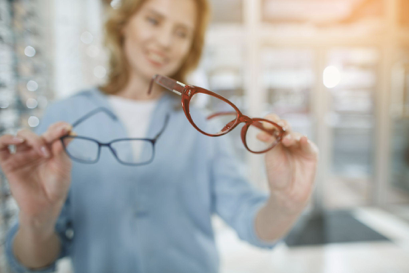Posted on: 27 April, 2022
There are many kinds of lenses to treat a variety of eye concerns. Many people need corrective lenses to fix a refractive error and improve their vision as a whole. Others may need multifocal lenses to manage two conditions.

Glasses and contact lenses help by focusing the light that comes into the retina in one spot. Some people may need multiple pairs of glasses or contact lenses for different problems. It’s important to know what your lens means to make sure you have the right one.
It can seem like there’s a myriad of different lenses and reasons why people may need them. Which is why we at R Woodfall have made you a short guide on the different types of lenses and what they mean.
Varifocal Lenses
Also known as progressive lenses, varifocal lenses allow you to see all distances and focal points with just one lens. Unlike bifocal lenses, the line differentiating between distances is absent, making varifocals a great option for those with multiple visual needs. Varifocal lenses work by graduating between short and long sightedness. This means that you can use them for both distances, in a gradual manner.
Toric Lenses
This lens was made for those with astigmatism. Astigmatism is a type of refractive error that happens when the cornea is misshapen. People with astigmatism often experience blurred vision, even with an average lens. Toric lenses differ from standard lenses as they are shaped to fit the irregular cornea of those with astigmatism. This makes toric lenses the best option for astigmatism as they were designed to deal with that specific refractive error.
Photochromic Lenses
Many people who wear glasses have often struggled finding sunglasses to fit over their prescription lenses. Photochromic lenses solve this problem by offering lenses that darken in bright sunlight, and lighten in darker lit areas. This makes being outside in the sun a lot more tolerable. Photochromic lenses are a great option, not just for glasses-wearers but for people who are concerned about their overall eye health. Photochromic lenses are designed to block out 100% of UVA and UVB light which can cause vision damage.
So how do I know which lens is for me?
At R Woodfall we have a variety of lenses to suit every eye care need. Contact us today to enquire about which lens you may need and we can offer you expert advice.
Copyright 2024 R. Woodfall. All rights reserved.